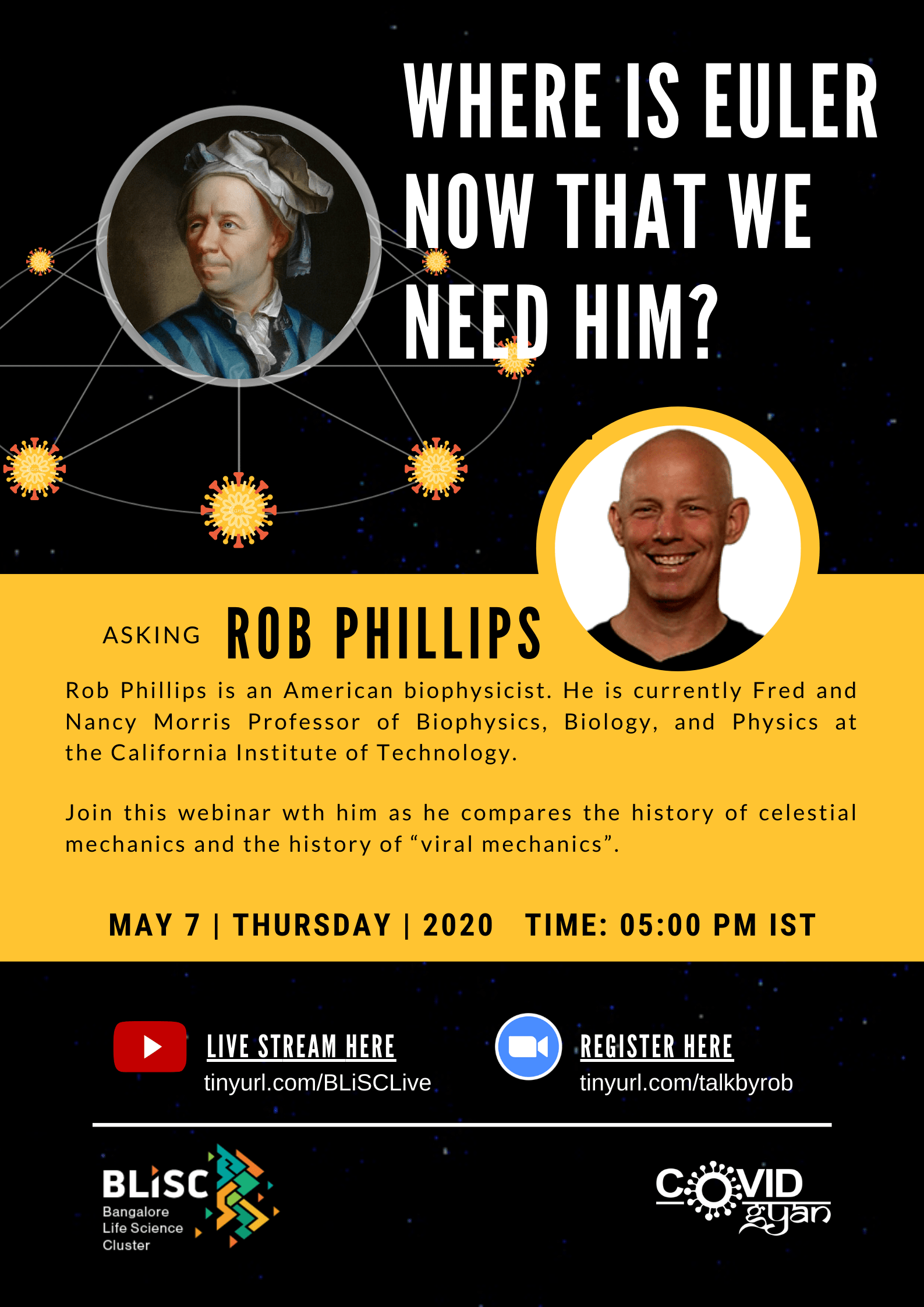WebGyan | Prof Rob Phillips : Where is Euler now that we need him
A COVIDGyan session by Prof. Rob Phillips, Caltech.
The current SARS-CoV-2 pandemic is a harsh reminder of the fact that, whether in a single human host or a wave of infection across continents, viral dynamics is often a story about the numbers. In this talk, I will begin by giving a “by the numbers” overview of viruses and how the SARS-CoV-2 virus infects humans. With that background in hand, we will turn to the question of how scientists of many different stripes are trying to predict the future course of the pandemic.
To consider that topic, I will make a serious analogy between the history of celestial mechanics and the history of “viral mechanics”. Specifically, I will harken back to the 1750s when Euler, d’Alembert and Clairaut were engaged in a careful study of the lunar orbit, including d’Alembert’s short-lived idea of a dual moon. The importance of this analogy is that it reminds us of the long-term, rigorous studies that it took to put celestial mechanics on its modern footing. The mathematical study of epidemic spread and vaccinations dates back to at least Daniel Bernoulli, and I will use these historic studies as a jumping off point to explain the current state of the art in predicting pandemic spread (not entirely satisfactory).
The study of viral mechanics has led to some clever ideas that aim to turn the latent period of the SARS-CoV-2 virus against itself permitting a cyclic return to work that will at the same time reduce the number of infections over time.
Register: https://zoom.us/webinar/register/WN_ifObH0tlT7Wid78q62cg_Q
Post-event summary: https://news.ncbs.res.in/bigger-picture/where-euler-now-we-need-him-webi...



